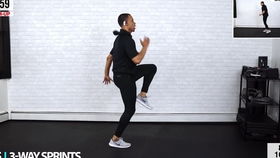Is It Ok to Workout When Sore?
Experiencing soreness after a workout is a common occurrence, and it often raises the question: should you continue to exercise when you’re feeling this way? In this article, we delve into the various aspects of soreness and workout routines to help you make an informed decision.
Understanding Muscle Soreness

Muscle soreness, also known as delayed onset muscle soreness (DOMS), typically occurs 24 to 72 hours after an intense workout. It’s caused by microscopic tears in the muscle fibers, which the body repairs and strengthens over time. While some soreness is normal, it’s essential to differentiate between mild discomfort and severe pain.
| Level of Soreness | Characteristics |
|---|---|
| Mild Soreness | Some tenderness, but you can still perform daily activities without difficulty. |
| Severe Soreness | Significant pain, difficulty moving the affected muscle, and limited range of motion. |
Severe soreness may indicate an injury or overtraining, and it’s crucial to consult a healthcare professional if you experience this level of discomfort.
The Benefits of Working Out When Sore

While it’s essential to be cautious, there are instances where exercising when sore can be beneficial. Here are a few reasons why you might consider working out despite feeling sore:
-
Stimulates Recovery: Gentle exercise can increase blood flow to the muscles, aiding in the healing process and reducing soreness.
-
Prevents Muscle Atrophy: Staying active helps maintain muscle mass and strength, which is crucial for overall fitness.
-
Boosts Endorphins: Exercise releases endorphins, which can help alleviate pain and improve your mood.
The Risks of Continuing to Work Out When Sore

However, there are risks associated with exercising when sore, particularly if the soreness is severe or caused by an injury. Here are some potential drawbacks:
-
Increased Risk of Injury: Pushing through severe soreness can lead to further injury or exacerbate existing ones.
-
Slower Recovery: Overtraining can prolong the healing process and hinder your progress.
-
Decreased Performance: Soreness can affect your ability to perform exercises with proper form, leading to decreased effectiveness and increased risk of injury.
When to Exercise When Sore
Deciding whether to exercise when sore depends on several factors, including the intensity of the soreness, the type of workout, and your overall fitness level. Here are some guidelines to help you make the best decision:
-
Moderate Soreness: If you’re experiencing mild soreness, you can likely continue with your workout routine, but focus on low-impact activities such as walking, swimming, or yoga.
-
Severe Soreness: If you’re dealing with severe soreness, it’s best to take a day or two off to allow your muscles to recover. Avoid high-impact exercises and heavy weights.
-
Warm-Up and Cool-Down: Always include a proper warm-up and cool-down to prepare your muscles for exercise and reduce the risk of injury.
-
Listen to Your Body: Pay attention to any pain or discomfort during your workout. If something doesn’t feel right, stop and consult a healthcare professional.
In conclusion, it’s essential to understand the difference between normal muscle soreness and severe pain. While exercising when sore can have its benefits, it’s crucial to prioritize your health and well-being. Always consult a healthcare professional if you’re unsure about whether to continue exercising when sore.














